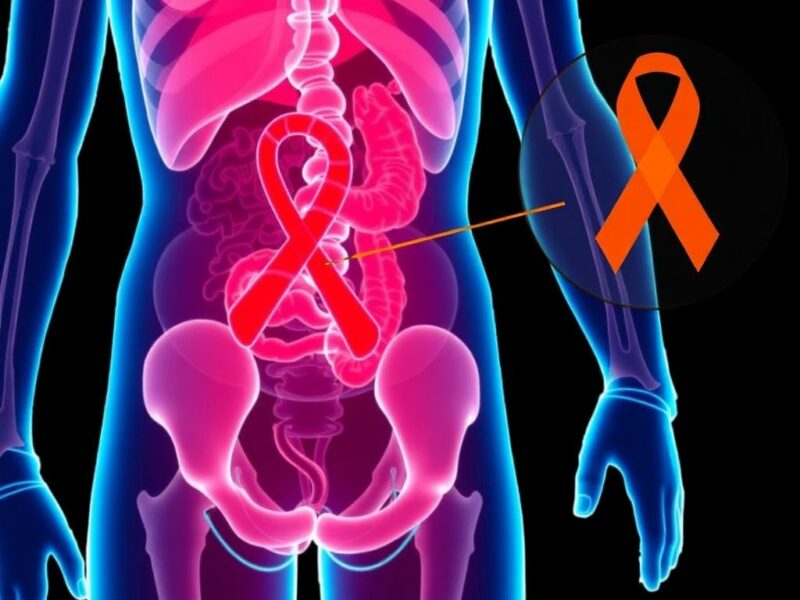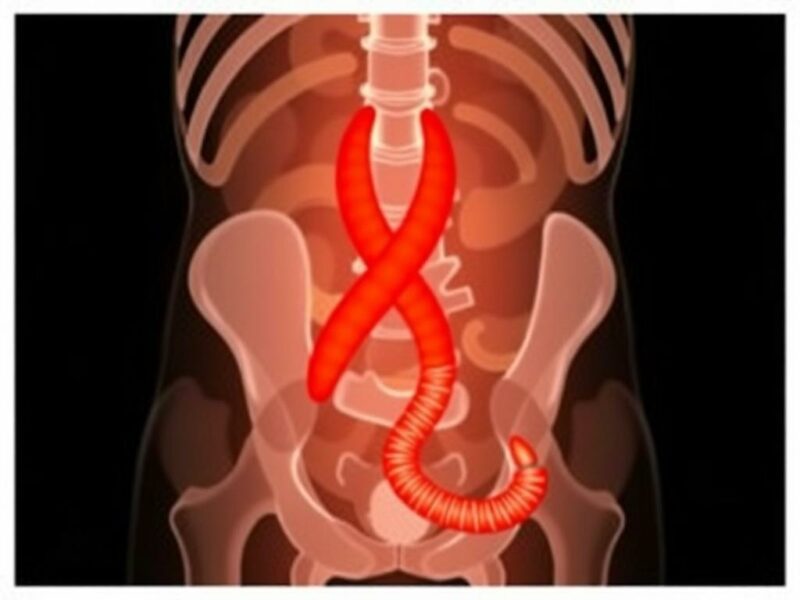Appendicitis is a common surgical emergency affecting millions worldwide. While it is generally well-understood in the general population, its occurrence in HIV patients presents unique challenges and considerations. The interplay between the immune system impairment caused by HIV and the inflammatory process of appendicitis makes diagnosis and management more complex. This article aims to provide an in-depth look at appendicitis in HIV patients, exploring how the infection alters typical presentations, the diagnostic difficulties encountered, and the best practices for treatment. Whether you’re a healthcare professional, a student, or an interested reader, understanding this subject is vital to improving patient outcomes.
What is Appendicitis, and Why Does It Matter in HIV Patients?

Appendicitis refers to the inflammation of the appendix, a small tube-like structure attached to the large intestine. It often starts with mild pain around the belly button, quickly progressing to severe pain in the lower right abdomen. The condition is usually caused by obstruction of the appendix lumen, leading to bacterial overgrowth, infection, and possibly rupture if untreated. Appendicitis is considered a medical emergency because a ruptured appendix can cause peritonitis, a potentially life-threatening infection of the abdominal cavity.
For individuals living with HIV, appendicitis can be particularly troublesome. HIV, or human immunodeficiency virus, progressively weakens the immune system, making the body less capable of fighting infections. This immunosuppression can alter the typical symptoms, delay diagnosis, and complicate treatment. Furthermore, HIV patients are prone to other abdominal infections and complications, which can mimic or obscure appendicitis. This overlap presents unique challenges in the clinical setting.
How Does HIV Affect Appendicitis Presentation?
One of the primary concerns with appendicitis in HIV patients is the atypical presentation. While in the general population, appendicitis usually presents with sharp right lower quadrant pain, fever, nausea, and elevated white blood cell counts, HIV patients may show less obvious or delayed symptoms.
The reasons for this altered clinical picture include:
- Immunosuppression: A weakened immune system may fail to mount a typical inflammatory response, leading to milder symptoms initially.
- Concurrent Infections: Opportunistic infections such as cytomegalovirus, Mycobacterium tuberculosis, or fungal infections may cause abdominal symptoms that overlap or confound appendicitis diagnosis.
- Medication Effects: Antiretroviral therapy (ART) and other medications might mask symptoms or cause gastrointestinal side effects.
Medical practitioners often note that HIV patients may present with less pronounced tenderness or systemic signs like fever. This scenario calls for a high index of suspicion and careful evaluation.
Diagnostic Challenges in HIV-Positive Patients with Suspected Appendicitis

Diagnosing appendicitis in HIV patients is tricky because the usual clinical and laboratory signs may be unreliable. Standard markers such as leukocytosis (increased white blood cells) can be absent due to HIV-related bone marrow suppression or ongoing ART. Moreover, symptoms like abdominal pain, nausea, or fever might be attributed initially to other AIDS-related complications.
Imaging studies become crucial in such cases. Ultrasound and computed tomography (CT) scans play vital roles, but even these can be affected by concurrent infections or anatomical changes. CT scans have high sensitivity and specificity for appendicitis and are often the preferred diagnostic tool. However, the risk of contrast nephropathy and radiation exposure must be considered, especially in HIV patients who may have renal impairment.
Here is a comparison of diagnostic modalities used in appendicitis for HIV-positive patients:
| Diagnostic Tool | Advantages | Limitations | Relevance in HIV Patients |
|---|---|---|---|
| Physical Examination | Quick, no cost | Often unreliable due to atypical symptoms | Limited; may miss subtle signs due to immunosuppression |
| Laboratory Tests (WBC Count, CRP) | Non-invasive, widely available | May be normal or misleading in HIV patients | Low sensitivity and specificity |
| Ultrasound | No radiation, bedside tool | Operator-dependent, limited by body habitus | Useful but can be inconclusive |
| CT Scan | High accuracy, detailed imaging | Costly, radiation exposure, requires contrast | Preferred tool but consider renal status |
Potential Complications of Appendicitis in HIV Patients

The presence of HIV significantly impacts the risk and nature of appendicitis complications. HIV-positive patients face heightened risks of perforated appendicitis, abscess formation, and postoperative infections. This is primarily because their weakened immunity restricts the body’s ability to contain infection effectively.
Some specific complications more common or severe in HIV patients include:
- Perforation and Peritonitis: Delays in diagnosis often lead to the appendix rupturing, flooding the abdominal cavity with infectious material.
- Postoperative Wound Infections: Impaired healing and immune response make surgical site infections more frequent and more severe.
- Opportunistic Abdominal Infections: Secondary infections by fungi or atypical bacteria in the postoperative period can complicate recovery.
- Drug Interactions and Toxicities: Medication regimens required for HIV can complicate antibiotic therapy.
Due to these risks, clinicians must monitor HIV patients closely before, during, and after treatment for appendicitis.
Treatment Approaches: Surgery and Medical Management
The mainstay of appendicitis treatment has traditionally been an appendectomy, the surgical removal of the inflamed appendix. In HIV patients, while surgery remains an essential intervention, the approach demands additional care.
Preoperative Considerations
Before surgery, thorough evaluation is necessary. This includes assessing the patient’s immune status, commonly using the CD4 count, viral load, and general health. Optimizing antiretroviral therapy and addressing opportunistic infections is vital. Prophylactic antibiotics need to cover a broader spectrum due to the risk of unusual pathogens.
Surgical Techniques
Laparoscopic appendectomy is increasingly favored due to its minimally invasive nature, quicker recovery, and reduced wound infection rates. However, in cases of perforation or abscess, open surgery may be required. Decision-making depends on the patient’s clinical status, available expertise, and surgical resources.
Medical Management
While surgery is the definitive treatment, some cases may benefit from conservative management with antibiotics, particularly when surgery is contraindicated or delayed. However, in HIV patients, the risk of treatment failure and complications is higher, so conservative management is approached cautiously.
Postoperative Care
Post-surgery, attention to wound care, infection prevention, and continuation of HIV therapy is critical. Regular monitoring for complications and supportive care can improve outcomes significantly.
Statistical Insights and Epidemiology of Appendicitis in HIV Patients
Understanding the epidemiology helps frame the clinical approach. Studies from various parts of the world have pointed out key trends:
- The incidence of appendicitis in HIV patients appears similar to the general population but with a higher rate of complicated appendicitis like perforation.
- Studies suggest mortality rates can be higher in HIV-positive individuals, especially with advanced immunosuppression.
- Delayed presentation and diagnosis are common, contributing to worse outcomes.
- Access to timely surgical intervention remains a critical factor influencing prognosis.
Such data reinforce the need for prompt and tailored management protocols in this group.
Key Recommendations for Clinicians
Managing appendicitis in HIV patients requires a multidisciplinary and cautious approach. Below is a practical checklist for healthcare providers:
- Maintain a high index of suspicion for appendicitis despite atypical presentations.
- Use imaging aggressively, especially CT scans, for accurate diagnosis.
- Assess immune status (CD4 count, viral load) before planning intervention.
- Optimize antiretroviral therapy and treat any concomitant infections beforehand.
- Prefer laparoscopic surgery when possible, but prepare for open surgery if complicated.
- Ensure broad-spectrum antibiotic coverage perioperatively.
- Closely monitor postoperative recovery and wound care.
- Educate patients about early symptom reporting to prevent delays.
Differences Between Appendicitis in HIV and Non-HIV Patients
| Aspect | HIV Patients | Non-HIV Patients |
|---|---|---|
| Symptom Presentation | Atypical, often vague or mild initially | Typical right lower quadrant pain, nausea, fever |
| Laboratory Findings | WBC count may be normal or low; inflammatory markers less reliable | Leukocytosis and elevated CRP common |
| Complication Rate | Higher risk of perforation and abscess | Lower risk with prompt treatment |
| Treatment Difficulty | More complex due to immunosuppression and drug interactions | Generally straightforward surgical management |
| Outcome | Worse if immunocompromised or delayed treatment | Generally good with early intervention |
Future Directions and Research Needs
Although considerable understanding exists about appendicitis in HIV patients, gaps remain. More comprehensive studies are needed on:
- The role of biomarkers specific to immunocompromised individuals to improve early diagnosis.
- Optimal antibiotic regimens tailored for patients with different levels of immunosuppression.
- Long-term outcomes and quality of life after appendicitis surgery in HIV-positive populations.
- Potential benefits of non-surgical management in select cases.
- Impact of newer antiretroviral therapies on surgical outcomes and infection risks.
Advancements in these areas could significantly improve care standards and patient prognosis.
Patient Perspective: Living with HIV and Appendicitis
For individuals living with HIV, the prospect of appendicitis can be daunting. Understanding the condition, recognizing symptoms early, and seeking prompt care are critical. Patients should feel empowered to communicate with their healthcare providers about any abdominal pain or gastrointestinal symptoms, even if mild. Adherence to ART and regular medical check-ups also play a vital role in overall health and preparedness for any surgical interventions.
Support systems, including family, friends, and patient groups, help manage stress and improve recovery outcomes. Education about possible complications and the importance of follow-up care enhances patient engagement.
Conclusion
Appendicitis in HIV patients is a complex medical condition requiring heightened clinical awareness and nuanced management. The immunosuppression caused by HIV modifies the disease’s presentation, complicates diagnosis, and raises the risk of serious complications. Despite these challenges, advances in diagnostic imaging, surgical techniques, and antiretroviral therapies have improved outcomes. Early detection, multidisciplinary care, and tailored approaches are essential for successful treatment. Continued research and patient education will drive progress, ensuring that individuals living with HIV receive timely and effective care for appendicitis and other surgical emergencies. Ultimately, understanding the interplay between HIV and appendicitis allows healthcare providers to optimize treatment and improve quality of life for this vulnerable population.



